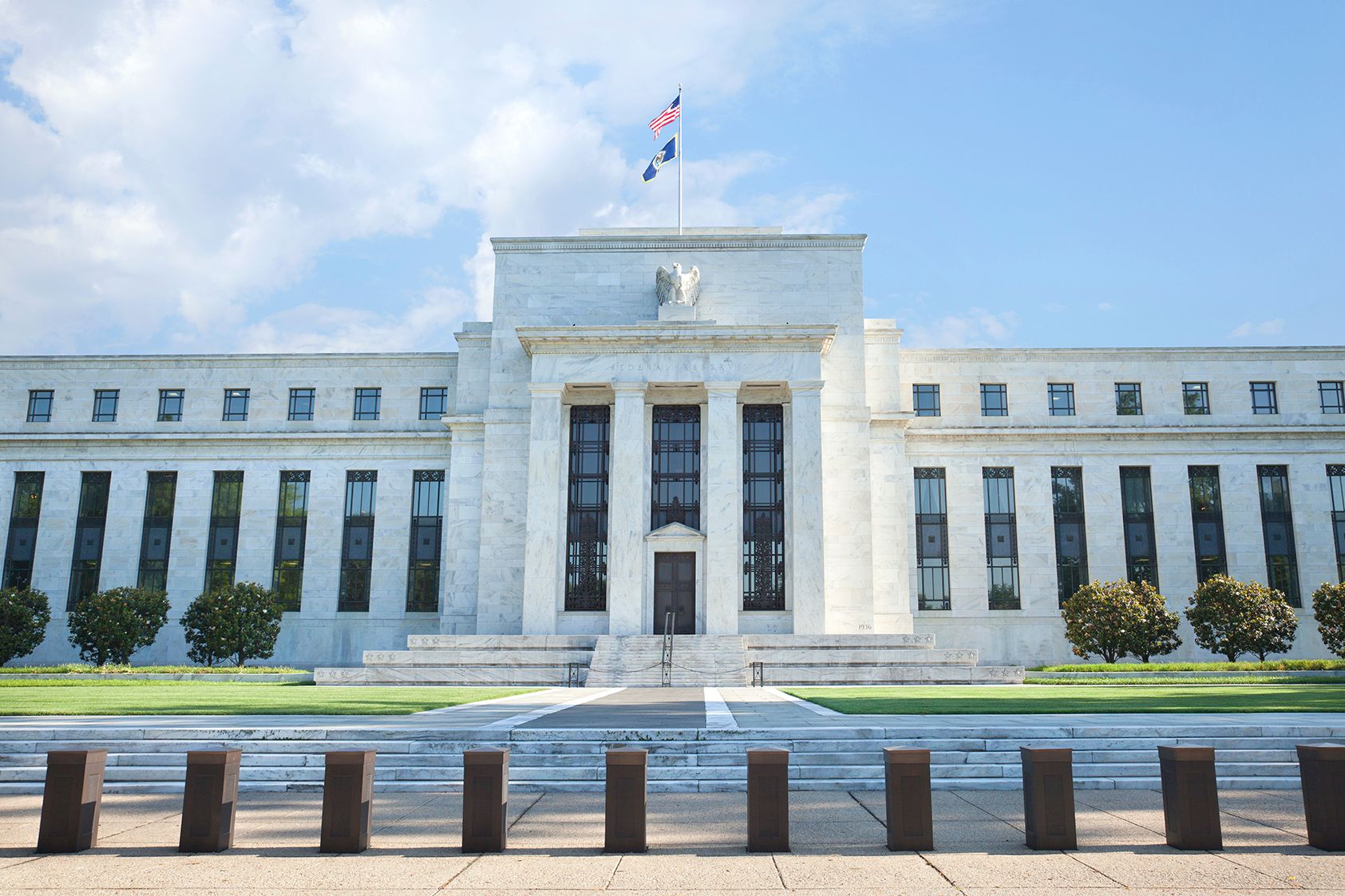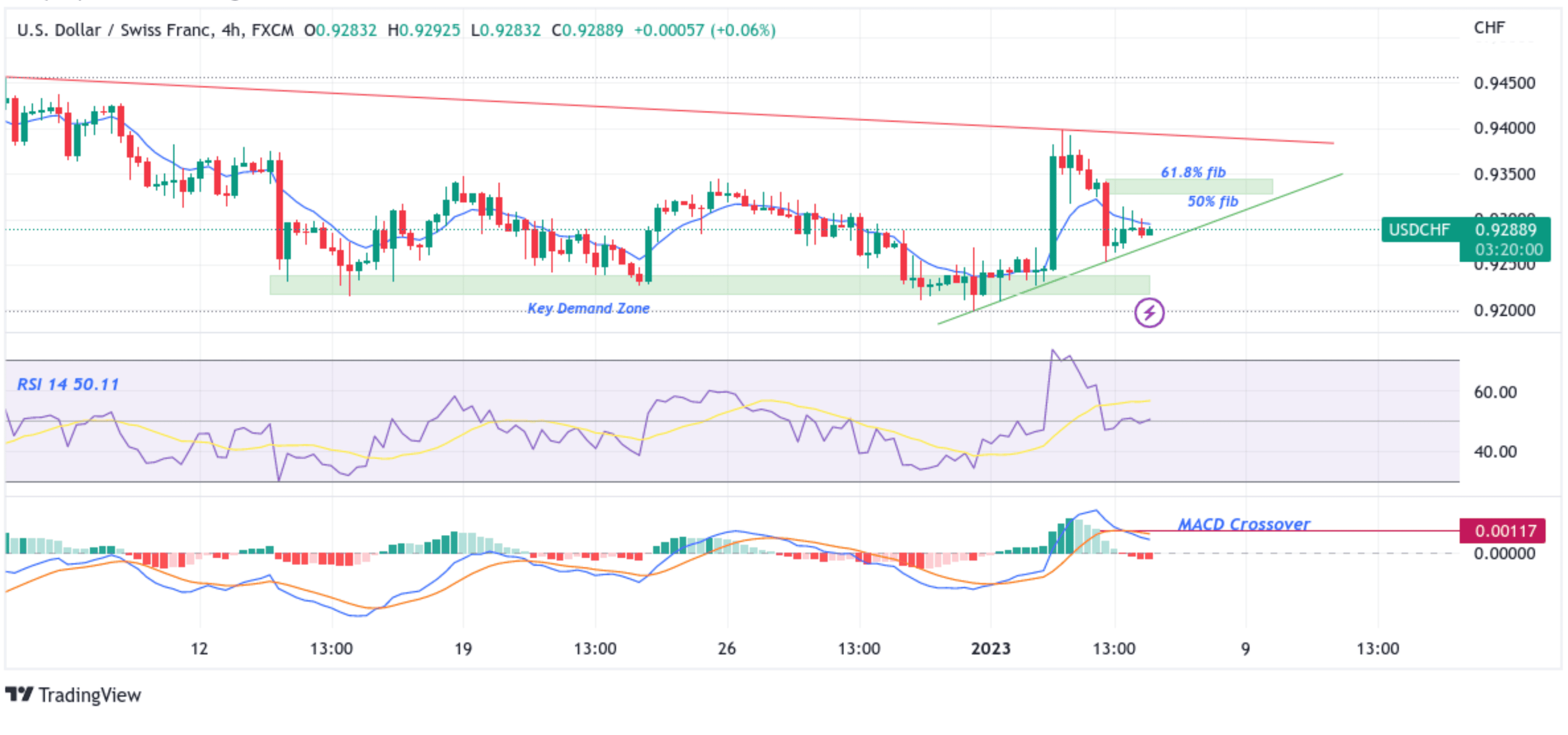USD/CHF Sticks To Modest Recovery Gains Above 0.92800 Mark, NFP Report Awaited






- USD/CHF pair attracted some buying during the late Asian session and extended a modest rebound from a key resistance level
- Rebounding treasury bond yields offers support to the greenback
- Fed officials see higher rates for some time ahead according to the recently released Feds Minutes
- Switzerland inflation rate below estimates
- Attention now shifts toward the release of the NFP jobs data report for December

The USD/CHF cross witnessed some renewed buying pressure during the late Tokyo session after a modest rebound in the vicinity of the 0.92831 level and staged some follow-through buying. The pair was last seen trading 5 pips up for the day and looked set to maintain its bid tone.
Rebounding treasury bond yields as investors look past mixed economic data released on Wednesday and the Federal Reserve's December meeting minutes, which signalled that Central Bankers do not expect rate cuts this year, was seen as a key factor that offered some intraday boost to the greenback which in turn exerted upward pressure on the USD/CHF pair. Additionally, fears that the aggressive monetary policy tightening planned by the FED would lead to an economic slowdown weighed on investors' sentiments. This was evident from a generally weaker tone around the U.S. equity markets, which extended some support to the greenback.
The U.S. Dollar index (DXY), which measures the value of the United States dollar relative to a basket of foreign currencies, was up 0.12% at 104.187, extending its modest rebound from the mid-week low/103.839 level after initially weakening following the release of the FOMC December Meeting Minutes.

In the recently released FEDs Minutes, The Federal Reserve (Fed) officials stated that they would need to maintain a restrictive policy stance until incoming data showed that inflation was consistently decreasing towards their target of 2%. They also emphasized the importance of being flexible and keeping their options open as they review data and cautioned the public not to interpret the slowing pace of interest rate increases as a weakening of their commitment to achieving price stability or a belief that inflation is already decreasing.
Fed Chairman Jerome Powell also noted that while some progress has been made in controlling inflation, he sees only limited signs of improvement and expects interest rates to remain at higher levels even after the increases stop. Additionally, despite market expectations, no Federal Open Market Committee members expect interest rate cuts in 2023.
Markets now predict that the Fed will increase interest rates by 0.5 - 0.75 percentage points before assessing the economic impact. Traders expect the central bank to approve a quarter-point increase at their next meeting in February.
The minutes further noted that officials are wrestling with two-pronged policy risks: One, that the Fed doesn't keep rates high long enough and allows inflation to fester, similar to the experience in the 1970s, and two, that the Fed controls the restrictive policy in place too long and slows the economy too much, "potentially placing the largest burdens on the most vulnerable groups of the population."
However, members said the risks are more weighted toward easing too soon and allowing inflation to run rampant.
In other news, manufacturing numbers showed another contraction for the sector. The ISM manufacturing index came in at 48.4 for December, down from 49 in November.

"Demand eased, with the (1) New Orders Index remaining in contraction territory, (2) New Export Orders Index markedly below 50 percent, (3) Customers' Inventories Index in 'just right' territory, and (4) Backlog of Orders Index recovering slightly but still in strong contraction," said Timothy Fiore, chair of the Institute for Supply Management.
Meanwhile, November's Job Openings and Labor Turnover Survey showed available positions at 10.46 million, slightly above a FactSet estimate of 10 million.
Shifting to the Swiss docket, monthly inflation data released on Wednesday showed consumer prices declined by 0.2 percent in December after being flat in November due to lower costs of fuel and heating oil, fruit, vegetables, and medicines. Every year, the annual inflation rate in Switzerland fell to 2.8 per cent year-on-year in December 2022 from 3 per cent in the prior two months, pointing to the lowest reading since April. The latest figure was slightly less than market forecasts of 2.9 per cent, amid a slowdown in the cost of food & non-alcoholic beverages (4.0% vs 4.4% in November), transport (5.3% vs 6.4%), housing & energy (4.2% vs 4.3%), household maintenance (5.7% vs 5.8%), and recreation & culture (1.8% vs 2%).
Following the Swiss CPI report, the Swiss franc changed hands at $0.93 at the beginning of 2023, remaining close to its most substantial level since the end of March 2022.

As we advance, investors look forward towards the U.S. docket featuring the release of the ADP Nonfarm Employment Change (Dec), seen higher at 150K, up from 127k the prior month. Investors will look for fresh impetus from the release of the Initial Jobless Claims data, which is expected to remain unchanged from a week before. Additionally, traders will look for clues from the release of the Trade balance (Jan) data seen slightly higher at -73.00B, up from -78.20B the previous month. That said, the attention remains on the NFP data report set for release on Friday, which is expected to show a decrease in the number of people employed last month and land at 200K, down from 263K people employed in November. The reports would influence the U.S. Dollar sentiment and provide trading opportunities around the USD/CHF pair.

Technical Outlook: Four-Hour USD/CHF Price Chart

From a technical standstill using a four-hour price chart, the price has built on the modest rebound from the vicinity of 0.92354 level following a firm rejection from the ascending trendline (key support level) of an ascending triangle chart pattern extending from the December 2022 swing low. On sustained strength, the upward trajectory could then accelerate toward 50% and 61.8% Fibonacci retracement levels at 0.93264 and 0.93438, respectively. The aforementioned fib levels would act as a barricade against any further uptick; however, if the price manages to pierce these barriers, it would pave the way for aggressive technical buying around the USD/CHF pair. The bullish trajectory could then accelerate toward the key resistance level plotted by a horizontal trendline of the ascending triangle chart pattern extending from 6 December 2022 Higher-highs. A convincing break above the aforementioned resistance level would pave the way for additional gains around the USD/CHF pair.
All the technical Oscillators on the chart are in positive territory, with the RSI (14) at 50.11, slightly above the signal line and portraying a bullish filter. On the other hand, the Moving Average Convergence Divergence (MACD) Crossover is also above the signal line, validates the upside bias, and further points to a bullish sign for price action this week.
On the flip side, any meaningful pullback by dip-sellers and tactical traders finds support at the 0.92846 support level en route, the (key support level) of the ascending triangle chart pattern extending from the December 2022 swing low. If sellers manage to breach these floors (including a bearish price breakout), downside pressure could accelerate, paving the way for a drop toward the demand zone ranging from 0.92169 - 0.92377 levels. Sustained weakness below the aforementioned zone would be seen as a new trigger by bears to continue pushing down the price.